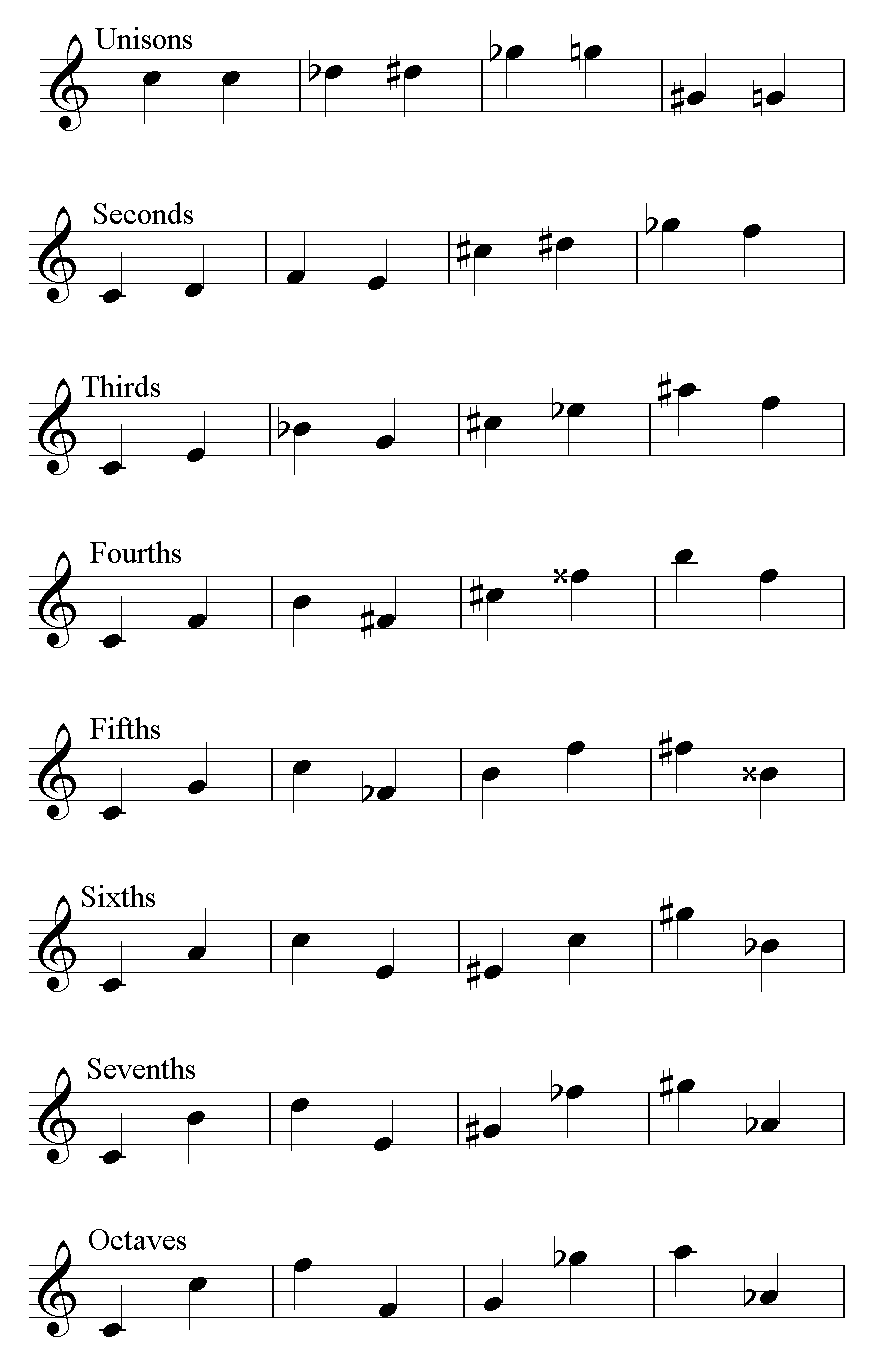
Intervals
Interval Classification
There are two components: An ordinal number and a quality
Ordinal Number
An ordinal number (first, second, third etc) that counts the diatonic note names of the interval including the starting and ending pitches.
This number is independent of any accidentals present -
Thus
C-E is a third
C#-E is a third
Cb-E# is also a third
The quality will be the factor in distinguishing between the different sizes of these intervals.
The term 'first" and "eighth" are not used - UNISON and OCTAVE are used instead.
Thus C to G is a fifth because C - D - E - F - G are 5 pitches
D up to C is a seventh
Following are example of all 8 intervals.
As you can see they do NOT all have the same size.

 | |
| Email: sbirch@kent.edu |